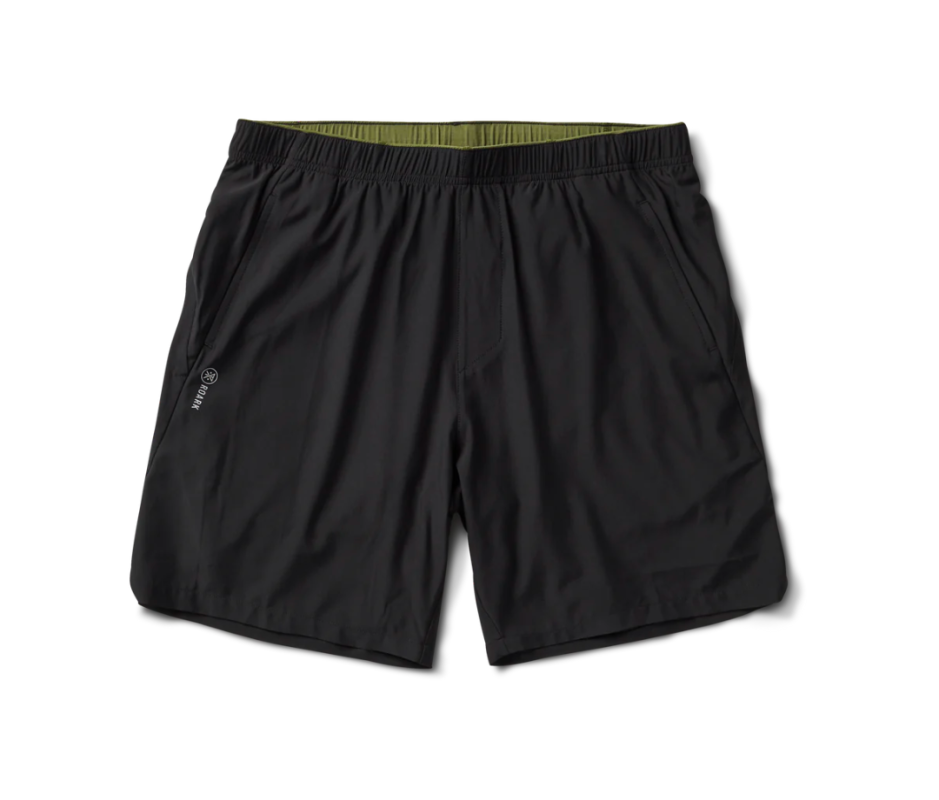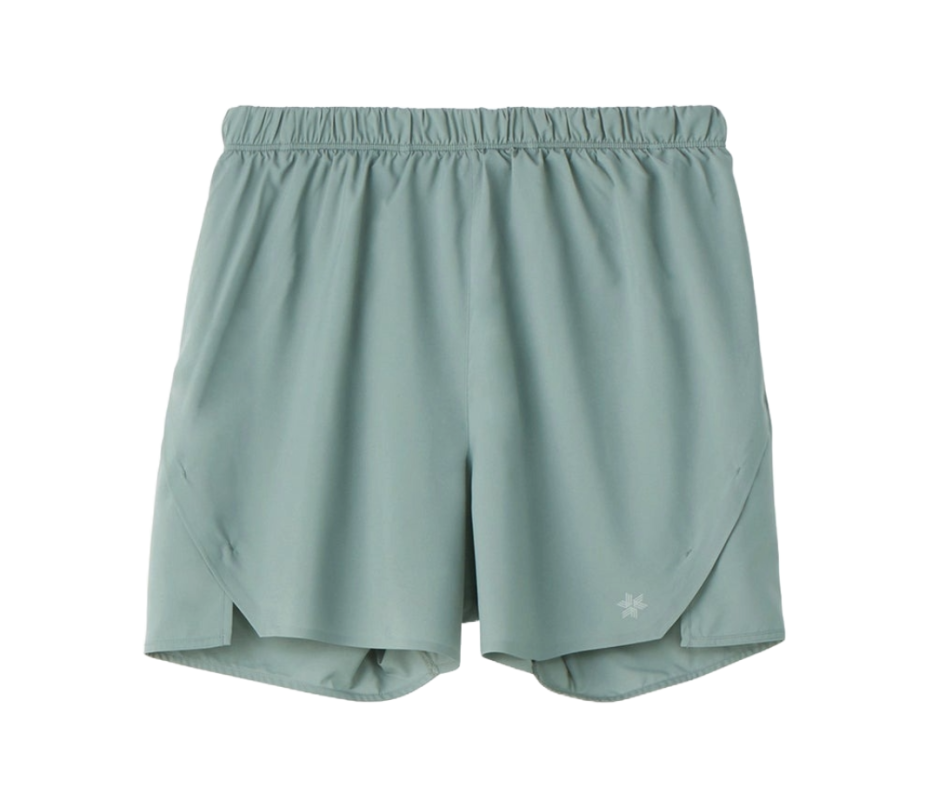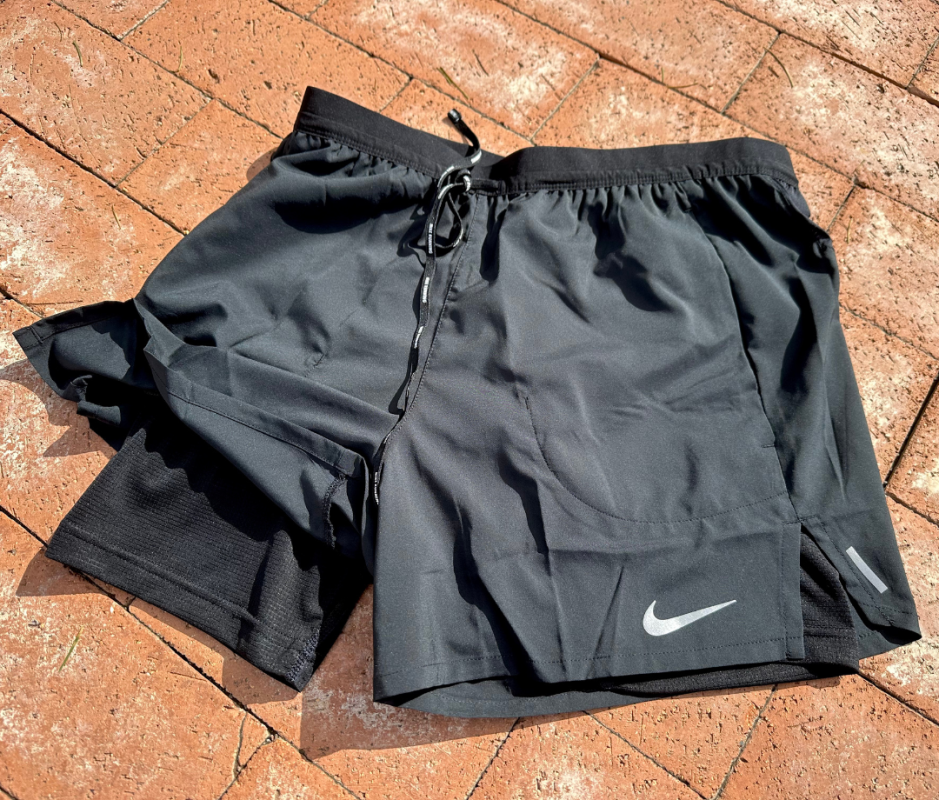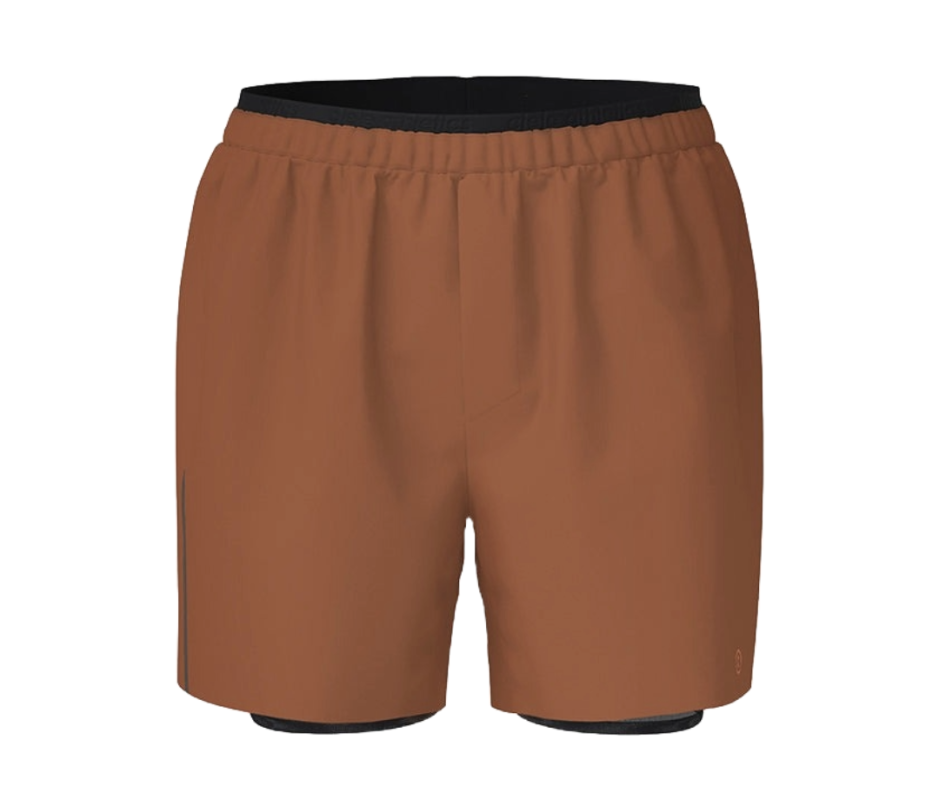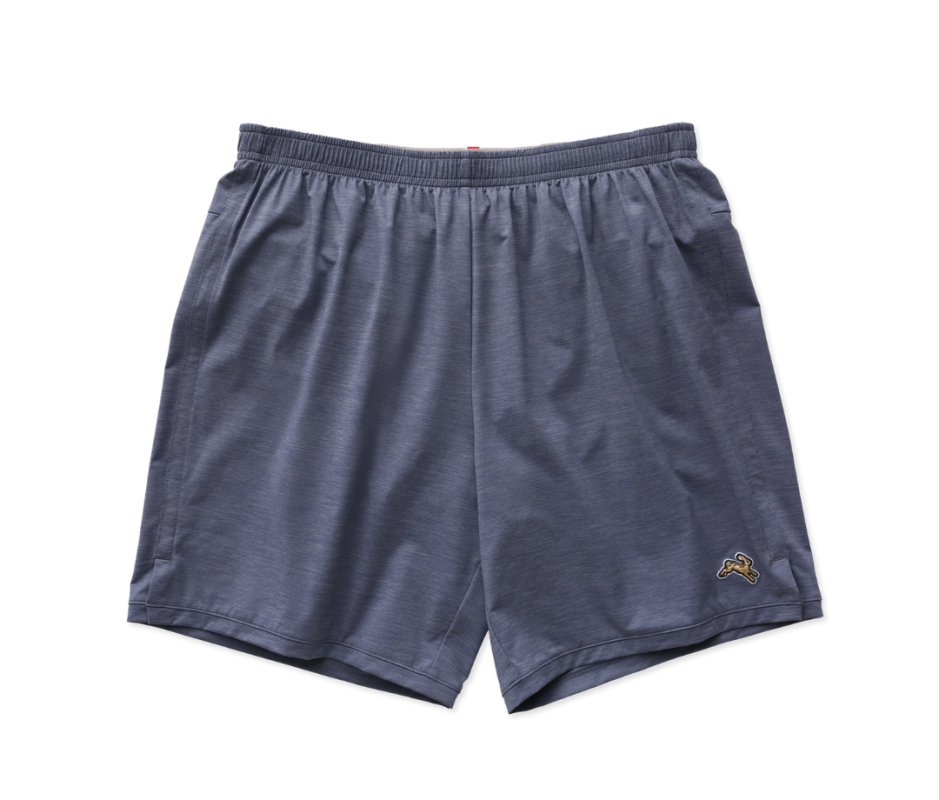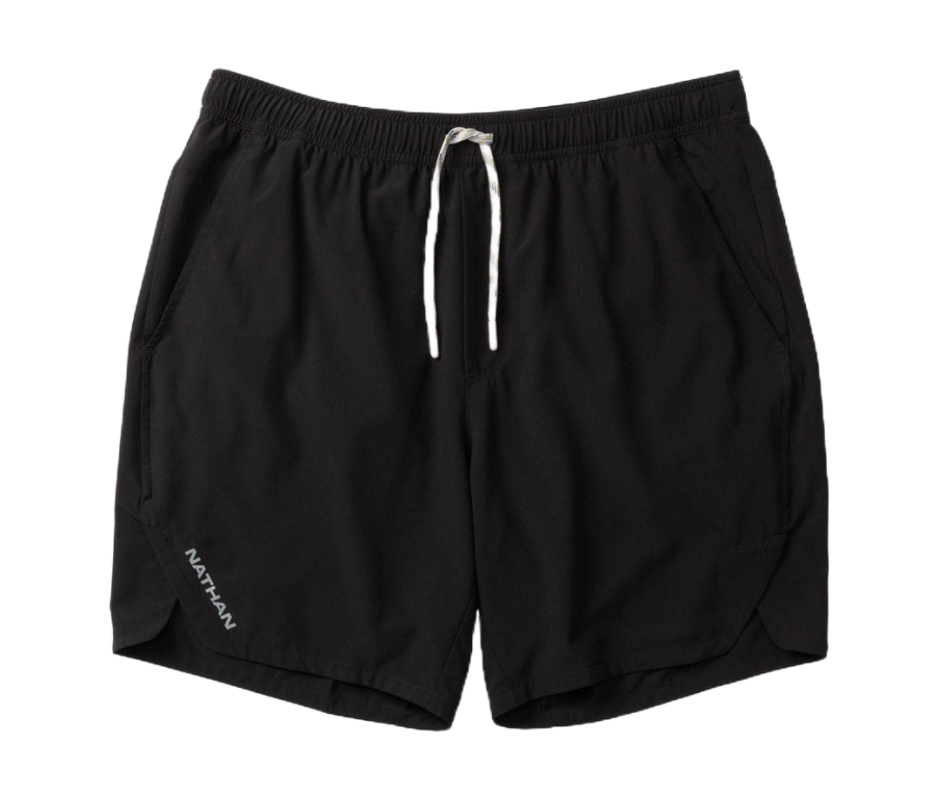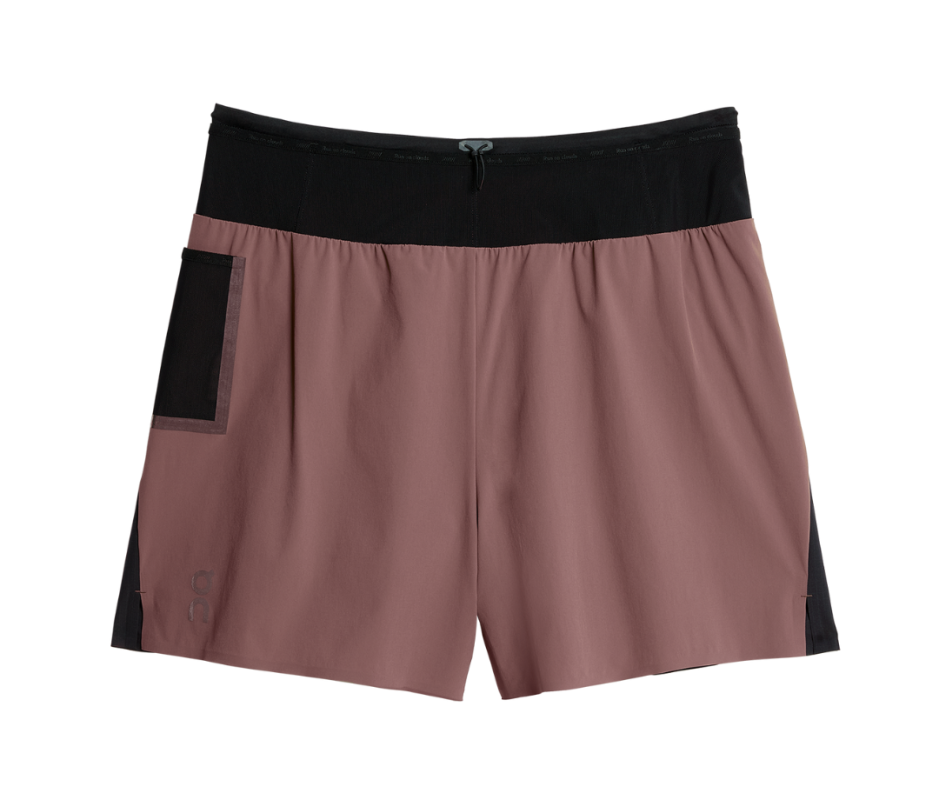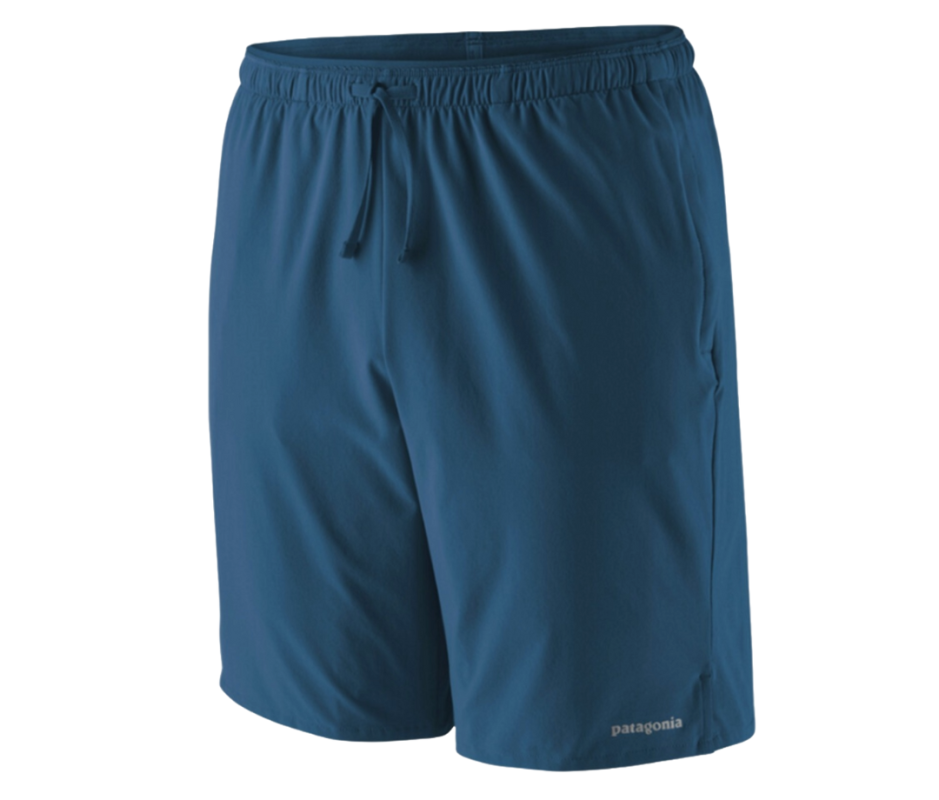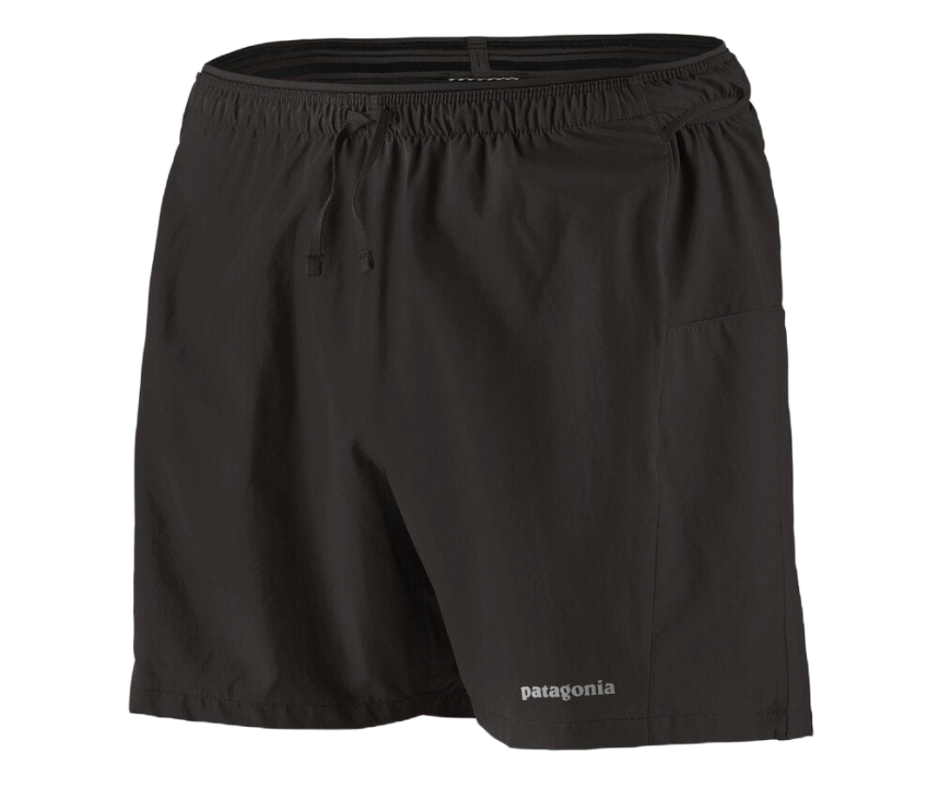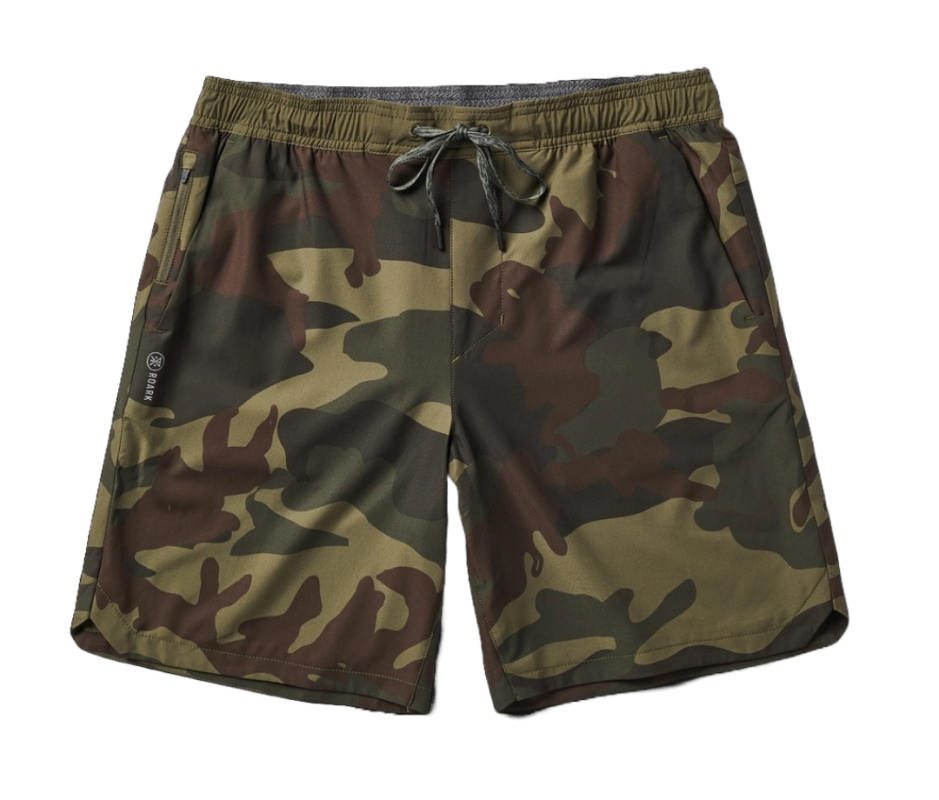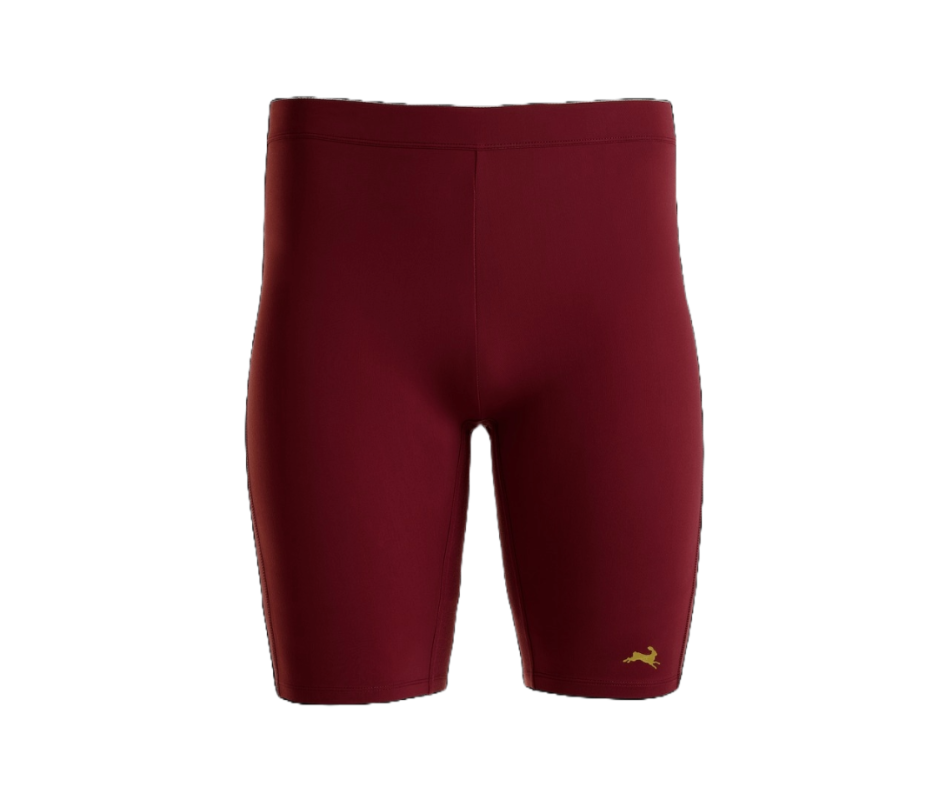Health
I Tested Dozens of Running Shorts. The Best to Buy Now Start at Just $40

Men’s Journal aims to feature only the best products and services. If you buy something via one of our links, we may earn a commission.
Aside from running shoes, no other piece of gear can make or break my running experience like shorts. Not long ago, I just ran in what I had. I played basketball and tennis, so I’d run in shorts made for those sports (think heavy nylon and baggy inseams with no support). Thin, breathable fabrics, zipper pockets, and liners were unknown necessities. Now, I actually enjoy running more because I have the appropriate running shorts.
Our favorite running shorts work with your stride, allow you to carry essentials, and remain dry and breathable no matter the activity. Now, I worry less about chafing or clanging keys and more about enjoying the sights and sounds of roads and trails.
Related: We Tested Every Hoka Running Shoe—These Are the Best
Best Overall Running Shorts: Roark Bommer 2.0 Shorts 7”
I’ve written numerous gear round-ups, and this was one of the toughest top spots I’ve ever had to choose. In the end, the Roark Bommer 2.0 boasts the best combination of features, comfort, and versatility, making them my favorite running shorts this year.
Bommer has the best boxer-brief lined shorts out there. The liner is supportive, soft, and has a phone pocket. The outer fabric has two magnetic close side pockets for versatile use and two small zippered pockets for keys and essentials. The shorts are well-ventilated in the rear, and the 7” inseam makes for a workhorse running short that can easily be worn around town after your workout. They also make a 3.5” option if you like them shorter for races or speedy workouts.
The liner is slightly thicker than others, so it dries a bit slower. That said, the shorts were comfortable even when I sweat, so this wasn’t a significant issue.
Pros:
- Excellent versatility; true one-and-done shorts.
- Soft and secure liner with built-in pockets/
- Outer has two magnetic pockets and two zippered pockets.
- Effective odor protection.
- Comfortable drawstring.
- Also available in 3.5” inseam.
Cons:
- On the heavier side.
- Not as fast-drying as other brands.
Best Upgrade Running Shorts: Goldwin Breathable Shorts (with C3Fit)
I tested these Goldwin shorts out one a trail run in Washington with professional ultrarunner Dylan Bowman, who’s sponsored by the brand. Of course one of the best trail runners in the world wears some of the best running gear. The Goldwin Breathable Shorts featuring the C3fit liner achieve an amazing balance of performance and comfort, albeit at a high price point.
The liner for long runs is great for long runs because it is very compressive and smooth on the skin. That means minimal chafing or rub even over 10 mile-plus runs. The liner also has the most secure phone pocket of all the shorts I tested, which is nice if you like to snap photos or listen to music on long runs. The outer is no slouch either, and the extremely lightweight material is the fastest drying on this list (plus, it features a zippered pocket for keys). The Goldwin Breathable Shorts were half dry just coming out of the washer’s spin cycle!
Now, no other shorts on this list are as expensive as this Goldwin pair, but if you want a versatile short for training and racing, then the combined breathability and compression of the shorts and liner make an admirable pair of running shorts.
Pros:
- Fastest drying shorts I tested.
- Super-compressive liner holds everything comfortably in place.
- Well-vented and flared outer layer is lightweight and unobtrusive.
- Thigh pocket securely held phone.
Cons:
- Expensive.
Best Value Running Shorts: Nike Flex Stride 2-in-1 5”
Nathan Lemin
In the 5” inseam option, the Nike Flex Stride 2-in-1 is performance-oriented at a lower price point than other lined shorts. The long liner was secure and comfortable, with excellent breathability.
While the materials aren’t quite as soft to the touch as other options, the moisture-wicking properties and comfort were great for a sub-$60 pair of shorts. The zippered pocket in the rear and side pockets were enough for everyday functionality. I wore these on a few long workouts and experienced zero chafing and no discomfort. That’s certainly a win, especially when you consider that these are often on sale, too!
Pros:
- More affordable than similar lined shorts.
- Lightweight and comfortable.
- Enough pockets to be versatile.
Cons:
- Fit a little tight for bigger runners.
- Materials don’t feel as premium as competitors.
Related: We Tested a Dozen Saucony Running Shoes. These Are Our Favorites
More Running Shorts We Love
Most Comfortable: Ciele M DLYShort Long Brief
Men’s Journal Editorial Director Matt Allyn called these “easily the most comfortable shorts [I’ve] tried.” That alone piqued my interest—and they totally hold up.
Just a few minutes after logging a chill 5 mile run in the Ciele M DLYShorts with the long brief, the shorts are already dry. And with how comfortable the liner is, I don’t immediately feel the need to change into other shorts.
They’re soft to the touch while still effectively wicking moisture. The liner is snug but not too snug. And the 5” inseam (with a generously cut side slit) doesn’t feel restrictive to run in or too short to wear around. Those features alone make them a great all around pair, but they also boast two liner pockets big enough for a phone and one zippered waist pocket for keys.
However, I have two hesitations. First, the shorts have pretty particular care instructions—cold wash and lay flat to dry. This isn’t a dealbreaker, but adds a step on laundry day. Second, the seam construction was a bit strange. On the liner, they’re prominently stitched inside the thighs and around the groin. On easy efforts I didn’t notice too much rub, but during a harder effort, the seams might cause some friction—though Matt happily wore these for last year’s New York City Marathon.
However, the drawbacks are minor and the overall performance and comfort from the Ciele DLYShort is excellent.
Pros:
- Super soft, long liner.
- Dual liner pockets, plus zippered rear waist pocket.
- Wicks moisture well.
Cons:
- More particular care instructions than other shorts on this list.
- Liner seams can cause chafing on longer, harder efforts.
Best Brief-Lined Running Shorts: Tracksmith Session Shorts 5”
Brief-lined shorts had the toughest job of trying to win me over, but the Tracksmith Session shorts were most up to the task. The premium feel of Tracksmith materials converted me to a brief believer. I love these shorts for city runs and everyday training because they look great and breathe well. The heathered blend on the Session is impressive, because while it has all the moisture-wicking chops of a tech-fiber, it looks and feels much more like a natural-fiber short. I wish there was at least one side pocket for a bit of added versatility, but the intention behind these shorts is utilitarian daily training. For those goals, no other brief-lined running shorts do it better.
Pros:
- Brief liner and outer material are soft and comfortable.
- Super lightweight and stayed cool in the heat.
- Brushed, heathered fabric looks and feels more premium than competitors.
Cons:
- Limited storage (just one zippered pocket).
- Somewhat delicate, not ideal for trail use.
Best Unlined: Nathan Essential Unlined 7” Shorts
If you’ve never bought a pair of running shorts and are scared off by the brief or long liner options, check out the Nathan Essential Unlined shorts. The 7” inseam is short enough to stay out of your stride, but long enough to provide ample coverage. The deep, soft pockets are great for everyday use, and the zippered pocket works fine for keys (though they might bounce a bit).
The shorts feature a straightforward design that doesn’t call attention to you when running. I found myself wearing these all the time in the summer, running or otherwise, due to their moisture wicking and versatility. They aren’t great for faster efforts, as the small side slit plus long inseam equals small leg holes, so they ride up if you’re sprinting. But for everything else the Nathan Essential Unlined is an amazing value.
Pros:
- Look great as everyday shorts.
- Super deep and soft-touch side pockets, plus zippered pocket on rear.
- Effective drawstring.
Cons:
- Zippered pocket placement isn’t great for items like keys.
- Ride up when running fast.
Best for Trail Running: On Ultra Shorts
For most distances, the On Ultra Shorts eliminate the need to run with a hydration pack or running belt, thanks to the high volume of storage for gear, goo, snacks and hydration.
The On Ultra liner is really soft, and the seams are so minimal that I didn’t chafe. The shorts have six pockets, most of which are tucked into the thick, stretchy waistband—and contents don’t shift while running. The four front pockets are great for quick-stash snacks and the rear zippered pocket is good for keys. The rear pocket overlays a sleeve, which can house a soft flask for hydration on your run. And the side pocket fits a phone with less bounce than I anticipated.
Overall, the pockets are the true star of this short. The outer was a bit stiffer than competitors, and I’d also might size up next time, as I found them slightly less roomy in the seat than others, especially when loaded down with gear.
Pros:
- Excellent pocket setup for long trail runs and ultramarathons.
- Brief liner is soft and lightweight.
- Eliminates need for hydration pack or running belt.
Cons:
- The outer material isn’t as soft as others on this list.
- Not the most roomy fit in the rear.
Best Long-Liner (Boxer Brief-Lined): Patagonia Multi-Trail Shorts 8”
Patagonia Multi-Trail Shorts are the perfect option for folks who don’t like the features of many running shorts—namely, super short inseams and overly tech-y liners. The 8” inseam on these shorts makes them the longest on the list, but the extremely comfortable, lightweight liner and soft outer fabric make these accessible for all runners.
While the liner is a little loose, I enjoyed these on easy trail runs or recovery days. The shorts didn’t feel overly tech-y or short, and they clung nicely to my body as I logged easy miles. Plus, the zippered side pockets are useful as standard everyday pockets, or to keep gear secure on your runs. I would’ve loved a liner pocket for my phone, but the lightweight, looser fit might not have supported it well.
Pros:
- Comfortable.
- Lightweight and breathable.
- Good blend of pockets on outer.
- Longer inseam makes them versatile everyday shorts.
Cons:
- No pocket on liner.
- Liner is a little loose, some may prefer snug fit.
Also Great for Trail Running: Patagonia Strider Pro 5”
The Patagonia Strider Pro features useful pockets for gear and snacks. While the outer material is super soft and high quality, the overall lightness of this pair of shorts is better suited to mid-distance training. I found once the miles piled up, the somewhat loose-fitting liner rubbed at my inner thighs. Luckily, the material is soft enough that it didn’t irritate me too much.
The quick access pockets make grabbing snacks and goo easy, and the breathability of these shorts is second to none. Additionally, the 5” inseam lies at a nice middle ground of speed and coverage.
Pros:
- Materials are superbly comfortable and light.
- Very breathable brief liner.
- Clever pocket design for trail-necessities like goo and snacks.
Cons:
- Liner is slightly loose, causing some rub
Best Everyday Shorts to Run in: Roark Serrano 2.0 Shorts 8”
These Roark Serrano 2.0 shorts are very similar to the Nathan Essential above in their versatility. If you can’t justify purchasing a pair of shorts just for running, then the Serrano makes a great pair of everyday shorts that you can also run in. These are now my go-to travel shorts, as they pack down super small, look great around town, and I can still go on runs or hikes in them.
Roark’s material is excellent. It’s soft, breathable, and dries out fast. The 8” inseam works for many people and many uses, and the pockets are useful both for running and around town. If I had to bring one pair of shorts on a trip, it would very likely be these Roark Serrano 2.0 shorts.
Pros:
- Variety of colorways.
- Still feature useful zippered running pockets.
- Roark recycled polyesters are really soft to the touch and wick fast.
Cons:
- No slit on the side leg, restricting range of motion.
- A touch long.
Best Half Tights: Tracksmith Reggie Half Tights (Unlined)
I don’t find half tights that useful for my style of running. But, after trying out the Tracksmith Reggie, I have to say, I’m going to start working these into my training rotation.
I also tested Tracksmith’s speed-oriented half tights, the Allston, but I found the Reggie to be more comfortable, especially because it’s unlined. The fabric on these is buttery soft, and I’ve even started wearing these on cold mornings under joggers. The small but crucial inclusion of the zippered pocket on the rear waistband makes carrying keys possible, but everything else about these half tights is super minimal.
Half tights are pretty revealing, and outside of competitive runners, I assume that’s why they aren’t as popular as regular running shorts. However, if you are trying to set PRs, do a lot of track workouts, or like a slimmed down setup for comfort, the Tracksmith Reggie Half Tight is the most comfortable I tested.
Pros:
- Incredibly soft.
- Stayed securely on my waist despite lack of drawstring.
- Features small zippered pocket for keys.
Cons:
- Not versatile.
- Revealing.
- Thick material doesn’t dry as fast as other shorts on this list.
Why You Should Trust Me
I’ve tested dozens of running shorts, half tights, and joggers—including pairs from brands like New Balance and Adidas that didn’t quite make the list. I run a lot, for enjoyment rather than competition. That means I care more about how I feel when I’m running than how fast I’m going. Sure, it’s fun to improve, and indeed running in well-designed shorts helps achieve better performance.
My running short needs are representative of a large group of runners. I’m not super slim and I have big legs, which means that I’m prone to chafing. The best running shorts the Men’s Journal test team have chosen for this list help men run more comfortably, effectively, and enjoyably.
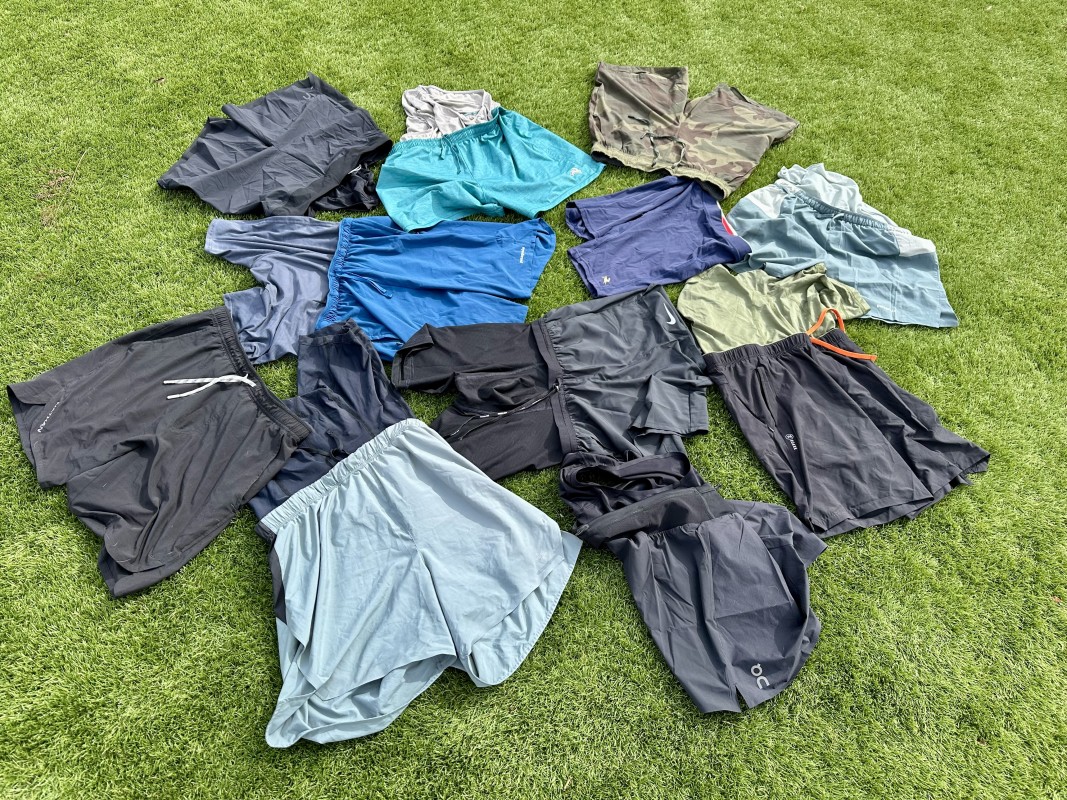
Nathan Lemin
What We Look for in the Best Running Shorts
To effectively test these shorts, I put them all through various procedures to get a sense of each material’s softness, durability and drying speed. On my runs, I tested the zippers and pockets: I took notes on how easy pockets were to open while moving as well as how secure or stable items in the pockets felt during the bounce of running. I’ve also been checking for pilling in the liners. The constant rubbing together of the material can cause cheap running shorts to wear down quickly; the shorts in this list have held up well. And to test drying speed and comfort when wet, I washed all the shorts together and hung them up to dry, noting which liners and outers dried fastest.
I look for a few key details to help choose the best running shorts. Personal preference is certainly a part of the decision, but whether you like lined or unlined shorts, longer inseams or shorter, there are some important aspects that can help you decide what you should shop for.
Unlined Running Shorts
Unlined shorts are typically less expensive and more versatile. All you need to do is pair them with a pair of decent moisture-wicking underwear or compression shorts for a good running experience. I like my unlined shorts with a slightly longer inseam (usually 7” or more) because then they can more readily be worn as everyday shorts. At least one zippered pocket; traditional side pockets; and soft, stretchy, and breathable material are ideal features for unlined running shorts.
Brief-Lined Running Shorts
I’m not the biggest fan of brief-lined shorts because my thicker thighs tend to rub against each other, causing chafing. That said, well-constructed brief-lined running shorts with a high-quality liner still feel great. Brief-lined shorts are typically race-oriented, with short inseams, lightweight fabrics, and comfort are all priorities here.
Long Liner / Boxer Brief-Lined Running Shorts
My favorite type of running shorts feature boxer brief liners or longer liners with mid-length inseams. These basically feature a compression short liner attached to a running short outer, which is great because the incorporated liner and shorts makes for just one clothing item to run in and launder afterwards. The liners often feature integrated pockets, which are great for heavier items like phones because they are compressed to your thigh. These shorts also help prevent my thighs from chafing and do a great job to keep everything in place—even on long efforts.
Half Tights
Half tights, sometimes called compression shorts, are the liner of a long-lined short, sans the outer fabric. These are designed for racing and speed, cutting out all unnecessary material and weight so there is less chance for rubbing and wind-resistance. While they are often super comfortable, they leave very little to the imagination, so I rarely wear these—save for the occasional track workout or extra long trail run.
Related: We Tested Every Running Shoe Asics Offers. These Are the Best
Health
The Hazards and Blessings of Being Male: Embracing the Seven Challenges For a Successful Life

Although there have been infinite varieties of life forms that have evolved on Earth in the last 4 billion years, two life forms that are our male and female ancestors evolved a billion years ago. Here’s how this first sexual experience occurred according to cosmologist Dr. Brian Swimme and historian Dr. Thomas Berry in their book, The Universe Story.
The first male organism—they call him Tristan—and the first female organism—they call her Iseult—began life in the ancient oceans. Swimme and Berry describe their chance encounter this way:
“They were cast into the marine adventure, with its traumas of starvation and of predation. Able to nourish themselves but no longer capable of dividing into daughter cells, such primal living beings made their way through life until an almost certain death ended their 3-billion-year lineage.
A slight, an ever so slight, chance existed that a Tristan cell would come upon a corresponding Iseult cell.They would brush against each other, a contact similar to so many trillions of other encounters in their oceanic adventure. But with this one, something new would awaken. Something unsuspected and powerful and intelligent, as if they had drunk a magical elixir, would enter the flow of electricity through each organism.
Suddenly the very chemistry of their cell membranes would begin to change. Interactions evoked by newly functioning segments of her DNA would restructure the molecular web of Iseult’s skin, so that an act she had never experienced or planned for would begin to take place—Tristan entering her cell wholly.”
Of course no humans were there to record this original encounter, but we all have origin stories and this one resonates with me. Dates are never exact and change as more information is gathered. Here are some additional dates I found important in The Universe Story timeline:
- 12 billion years ago, the universe begins.
- 4 billion years ago life first emerges.
- 1 billion years ago sexual reproduction evolves.
- 216 million years ago the first mammals appear.
- 30 million years ago the first apes inhabit the earth.
- 2.6 million years ago the first humans appeared.
- 200,000 years ago Archaic Homo sapiens evolved.
- 10,600 years ago first settlements in the Middle East emerged and wheat and barley were cultivated.
Needless to say, we have a long evolutionary history to embrace. In their book, Solving Modern Problems with a Stone-Age Brain, Douglas T. Kenrick, PhD and David E. Lundberg-Kenrick describe seven evolutionary challenges we must all face and embrace. They offer a visual summary as a revision of Maslow’s original Hierarchy of Human Needs which they call The New Pyramid of Human Motives:

The Seven Challenges for a Successful Life
During the billion years of life, all organisms must embrace these challenges and they are particularly relevant beginning with our mammalian history. In their book, the Kenricks ask, “What are the fundamental problems of human existence?” They go on to share the results of their research.
“Together with a large team of researchers at more than 30 universities on five continents, we have been investigating the universal motivations faced by human beings around the globe.”
Here is a summary of their findings:
We must meet our basic physiological needs for shelter from the elements,
water, and food.
- Protect yourself from attackers and plunderers.
Given the scarcity of resources and the ever-present possibility of starvation, there has always been competition among different groups (most often the male members) for precious real estate and resources (including access to females).
As the Kenricks remind us. “Our ancestors were not rugged individualists.
They need to band together not only to protect themselves from bands of
marauding bad guys but also to accomplish most of the tasks of everyday life.”
Some people have always been more resourceful and clever than others and
some were more willing to bravely defend their groups against armed marauders.
Those resourceful and courageous individuals won higher status and gained
greater respect.
“From the perspective of evolution by natural selection,” say the Kenricks, “this
step is essential. Every one of our ancestors managed to attract at least one
person who wanted to make with them. Not everybody in the ancient world got
to reproduce, though, and a reasonable percentage of men went unmated.” This
fact, is of major importance when understanding male desires, fears, and
behavior.
From an evolutionary perspective, we not only have to find a mate who will have
sex with us, but we need to hold on to our mate long enough to have a child and
raise the child to maturity, so they can find a mate and continue the process.
- Care for your family members.
Unlike other animals, human males are much more involved with raising children, since human children require long-term care before they reach reproductive age.
Males and Females Are Alike and Also Different
Males and females are alike in that they must both successfully meet the seven challenges noted above. However, there are also significant evolutionary differences. These differences first came home to me when I first met psychologist David M. Buss and read his book, The Evolution of Desire: Strategies of Human Mating.
“If mating desires and other features of human psychology are products of our evolutionary history,” says Dr. Buss, “they should be found universally, not just in the United States.”
To test his theories, he conducted a five-year study working with collaborators from thirty-seven cultures located on six continents and five islands. All major racial groups, religious groups, and ethnic groups were represented. In all, his research team surveyed 10,047 persons world-wide.
Dr. Buss concluded that there are actually two human natures, one male, the other female. What do women really want? Buss found that the top three qualities that women look for in men are exactly the same as those things that men look for in women: Intelligence, kindness, and love. Then, what women want diverges from what men want.
“Women then look at a man’s ability to protect her and her children, his capacity to provide, and his willingness to make commitment to a relationship,” says Buss.
What do men really want?
“A man is drawn to youth and beauty,”
says Buss.
“This interest is not just a modern desire driven by advertising and male desire to control women [though advertisers take advantage of our evolutionary-driven desires]. It is a universal desire based on evolutionary pressures for reproductive success. Men who mated with women who were incapable of bearing children left no ancestors. Every man alive today is descended from men who did not make that mistake. Worldwide, men are drawn to younger women.”
Note: Just because we have these evolutionary-based desires does not mean we must act on them, that they are good for us, or will make us, or the partners we desire, happy. It also does not mean they are hard-wired into our biological makeup and can’t be changed. It does mean that we must take seriously our evolutionary-based desires and listen to the ancient “whisperings within” that pull us in certain directions.
The Hazards and Blessings of Gender-Specific Health
The ancient Roman philosopher, Virgil offers a simple truth to consider.
“The greatest wealth is health.”
A modern American medical doctor, Marianne J. Legato, M.D., world-renowned cardiologist and founder of The Foundation For Gender-Specific Medicine, says,
“The premature death of men is the most important—and neglected—health issue of our time.”
Although human males, as a group, occupy more positions of power in government and business than women, it has come at a price. This was first brought home to me by psychologist Herb Goldberg, in his book 1976, The Hazards of Being Male.
“The male has paid a heavy price for his masculine ‘privilege’ and power. He is out of touch with his emotions and his body. He is playing by the rules of the male game plan and with lemming-like purpose he is destroying himself—emotionally, psychologically and physically.”
In recent years we have learned a lot more about the realities of being male.
“If it’s true that men rule the world, it comes at a heavy cost,”
says Dr. Legato.
“From conception until death, men are inherently more fragile and vulnerable than women. In virtually every society today, men die first.”
Dr. Legato offers the following facts of life:
- The male fetus is less likely to survive the womb than the female.
- Boys are six weeks behind in developmental maturity at birth compared to girls.
- Men have four times the developmental disabilities of females.
- Men suffer more severely than women from seven of the ten most common infections that human experience [Including Covid-19].
- Men are likely to experience the first ravages of coronary artery disease in their mid-thirties, a full 15 or 20 years before women.
- Twice as many men die of heart disease, the leading cause of all deaths, than do women.
- Men die by suicide 4 times more than women.
- Murder and homicide are among the top four killers of men from the time they are born until heart disease and cancers begin to claim those who survive into middle age.
Accepting the realities of our own inherent weakness and vulnerabilities instead of trying to pretend we are masters of the universe is the first step we just take to begin our own healing and recovery.
I have been writing a series of articles on the Future of Men’s Mental Health. In Part 3, “Gender-Specific Healing and Man Therapy,” I explore my own healing journey and issues that address the unique problems faced by men and how the emerging field of Gender-Specific Healing and Men’s Health is a key to the future of health care. If you’d like more information about upcoming trainings, drop me an email to Jed@MenAlive.com and put “Gender-Specific Health Training” in the subject line.
Health
Healthy No-Bake Peanut Butter Bliss Balls

This post may contain affiliate links. As an Amazon Associate, I earn from qualifying purchases. Please read my disclosure.
My no-bake, healthy peanut butter bliss balls are loaded with creamy peanut butter and chocolate flavor, making them a hit with both kids and adults alike. Enjoy these as an on-the-go breakfast, wholesome snack, or healthy dessert alternative! They’re also dairy-free, vegan, gluten-free, and low in sugar, making them ideal for a variety of dietary preferences.
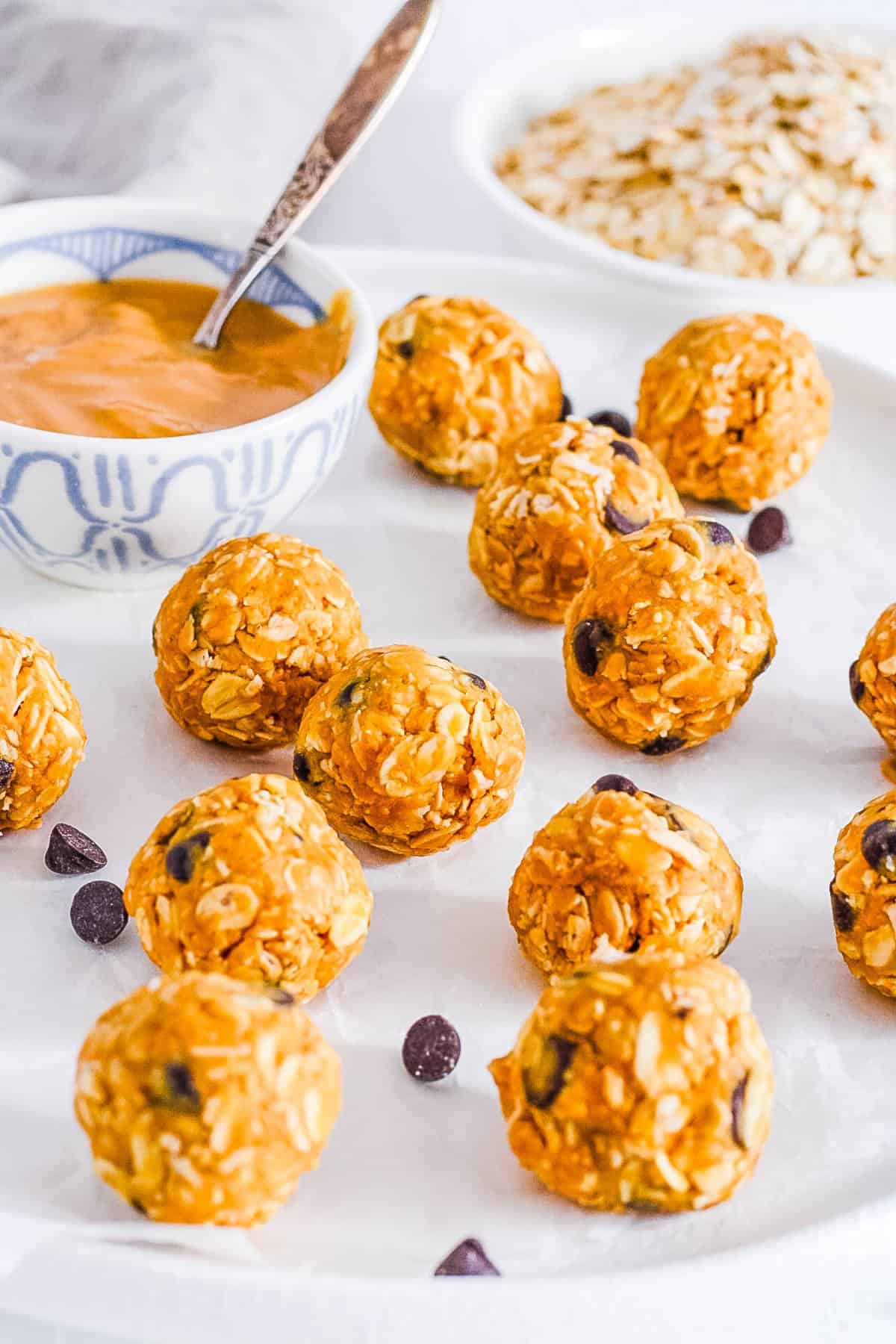
Indulge in my delicious no-bake peanut butter bliss balls, affectionately called “cookie dough bites” by my daughter. They taste like dessert, but are totally guilt-free and nutrient-rich! I love bliss ball recipes like this one because they come together quickly, and always satisfy my sweet tooth!
With only five simple ingredients and just ten minutes of prep time, bliss balls are a perfect option for busy days. I especially love making a huge batch at the beginning of the week, and enjoying them all week long for ultimate convenience. I find that they taste even better the next day, once they’ve had time to chill in the fridge for a while longer!
These protein balls with peanut butter are such a fun treat for any time of day! I really love how versatile they are – I’ll often use them as part of a quick breakfast, for packing in my kids’ lunches, or as a mid-afternoon snack.
Made with natural peanut butter, hearty oats, and a touch of pure maple syrup, I’ve crafted these bliss balls to be as healthy as possible. You won’t find any refined sugar here, even with these healthy swaps they still taste just like cookie dough. And each ball has only 90 calories and 3 grams of sugar!
I’ve also made sure that these wholesome ingredients can come together with minimal equipment required. No need to deal with your bulky food processor and spend all that extra time cleaning!
And my all time favorite thing about this recipe is that it’s a great way to involve kids in the kitchen. My kids have so much fun helping me out and adding in their own special twists.
Your family can also customize them in so many different ways, changing things up based on your preferences! I’ll share my favorite variations later in this post (like my peanut butter bliss balls with protein powder)!
Latest Recipe Video!
🥘 Ingredients
My easy peanut butter bliss balls recipe calls for just 5 nutritious ingredients, all easily found in your pantry or local grocery store. Here’s what you need:
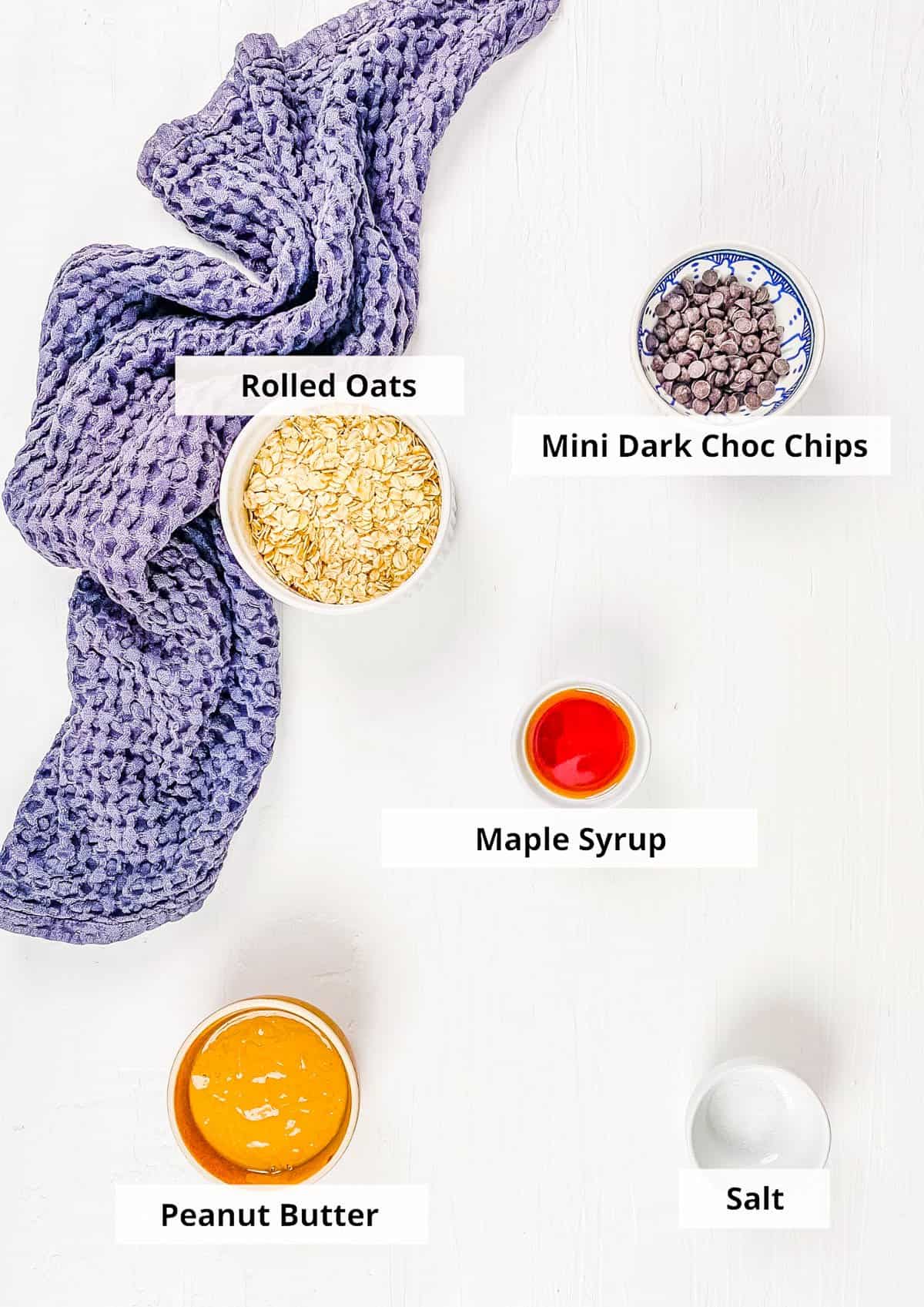
Oats: I’ve found that rolled oats work best for these kid-friendly bliss balls. I don’t recommend using oat flour or quick oats as it won’t have the same texture as whole oats, and won’t hold up as well.
Natural Peanut Butter: I use creamy peanut butter to bind all the ingredients together and add a boost of protein to these energy bites. If you don’t have peanut butter, try almond butter as a 1:1 substitute. Other nut butters (like cashew butter or a mixed nut butter) should also work in place of peanut butter, but the bites might have a slightly different consistency since some nuts create a thinner or runnier butter than others!
Dark Chocolate Chips: I prefer using dark chocolate chips for a healthier choice. These can be regular or mini chocolate chips. To keep this recipe vegan-friendly, I’ll use dairy-free chocolate chips. If you don’t need these to be vegan, then semisweet, white chocolate, or milk chocolate chips are all yummy options.
Maple Syrup: The only added sugar is natural maple syrup which gives the bliss balls a slightly sweet taste. If you don’t have maple syrup on hand, agave, raw honey, or vegan honey work.
Vanilla Extract: Pure vanilla extract brings out the richness of the chocolate. Sometimes I also add a pinch of salt to really enhance the sweetness. For a nutty flavor, try using almond extract.
🔪 How To Make Peanut Butter Bliss Balls
My vegan no bake peanut butter balls are so easy to make – they’re ready in just 3 simple steps. Let me show you how to make these healthy dessert balls:
Combine Ingredients: In a large bowl, using a wooden spoon, I start by stirring together the oats, peanut butter, chocolate chips, maple syrup, vanilla, and salt until combined.
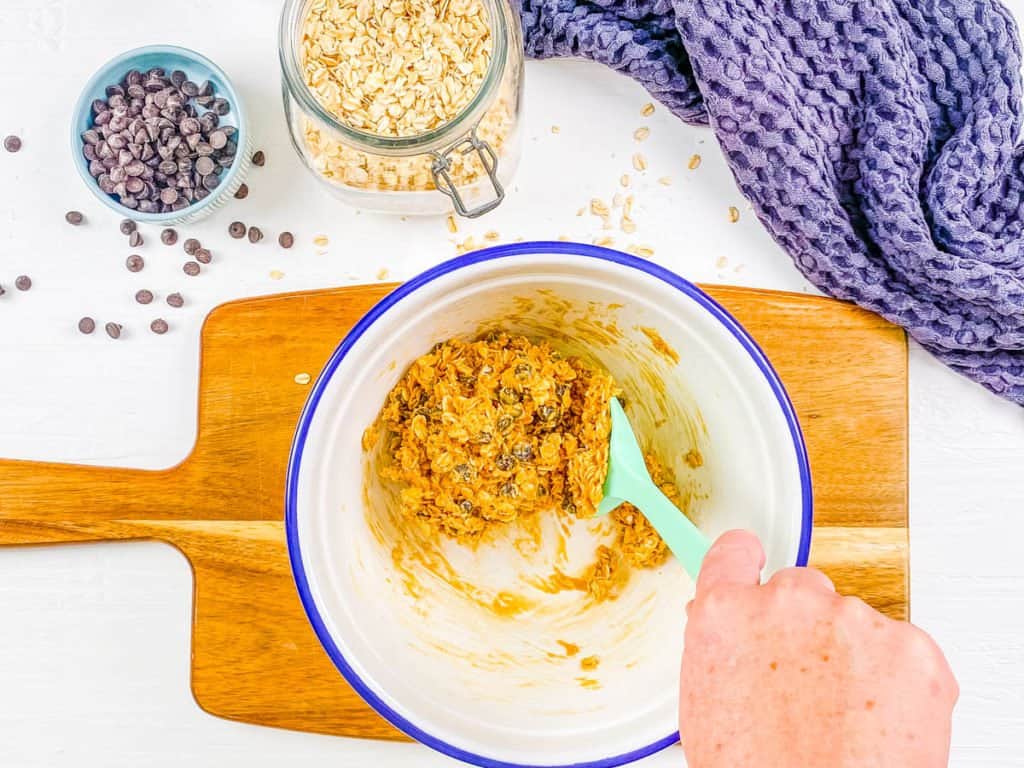
Form The Bliss Balls: Next, I line a baking sheet with parchment paper. Taking small handfuls of the mixture, I roll them into small balls 1-2 inches in size – about the size of a golf ball or ping pong ball. I prefer to use a cookie scoop to make this step extra easy. Place each ball onto the baking sheet.
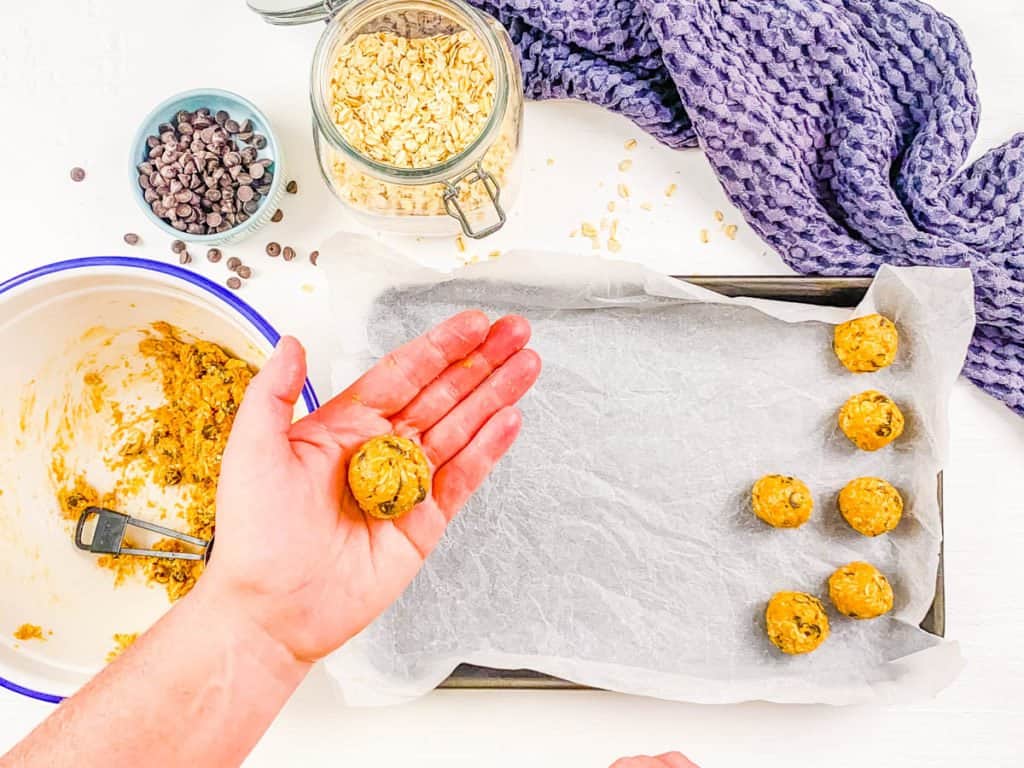
Let The Balls Set: Once rolled, I refrigerate these peanut butter snack balls for 30 minutes or until solid.
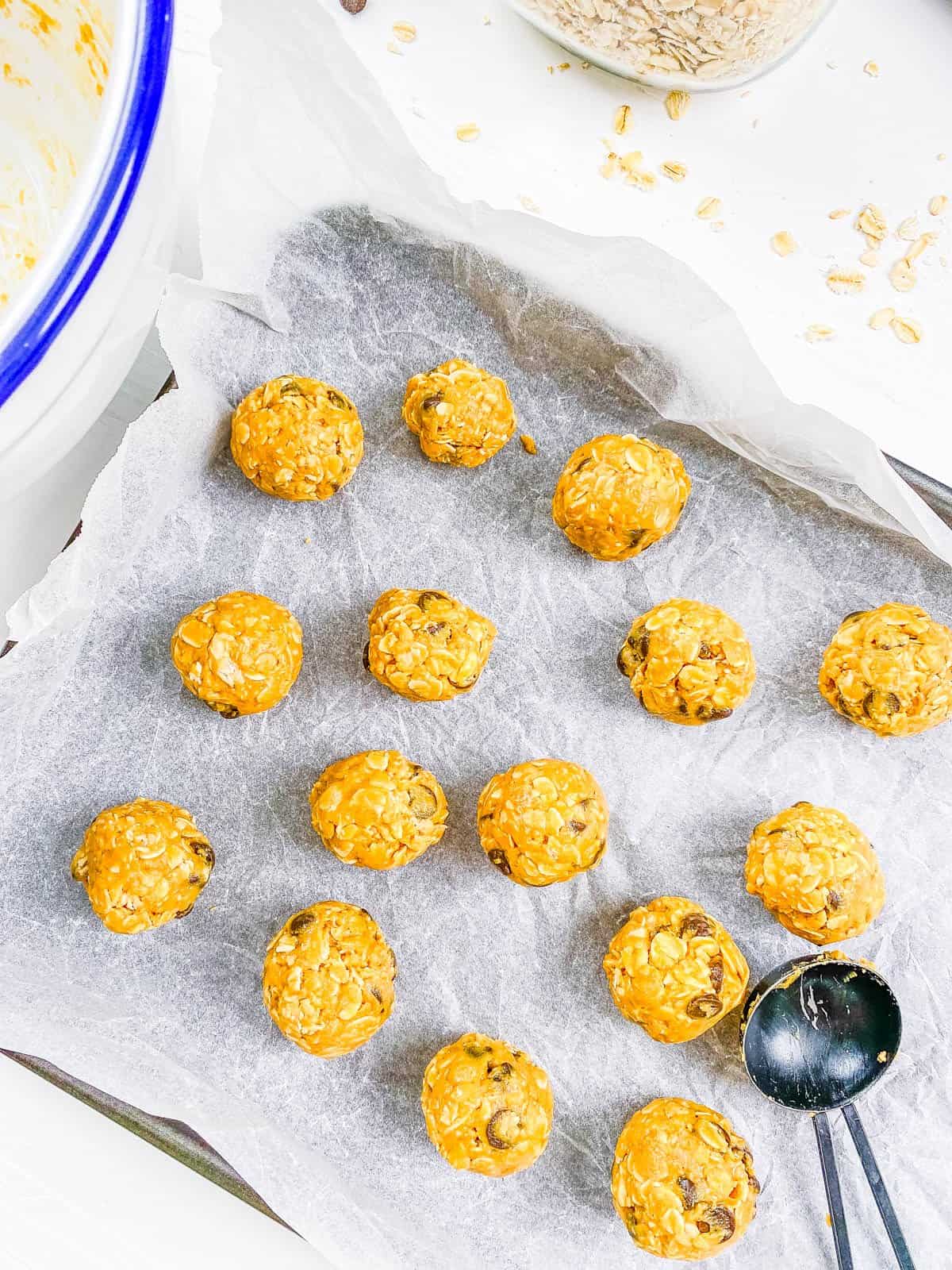
My #1 Secret Tip for this recipe is to make sure you measure ingredients precisely, with the right ratio of wet to dry ingredients.
While there is a little wiggle room with these bliss balls due to them being a no-bake recipe, I recommend being precise with all measurements to ensure ensures that the mixture has the right consistency to hold together without being too sticky or crumbly.
The creamy peanut butter is critical as the binding ingredient for these bliss balls, and I find it to be especially important to measure correctly. Too much or too little will throw the whole recipe off, leading to a mixture that is either too wet and sticky or too dry and crumbly.
After trial and error, I have found that achieving this balance is important for forming perfect bliss balls that stay intact and have a great texture.
Other Tips To Keep In Mind:
- Use The Right Tools: I like to use a cookie scoop to get all of these no-bake bliss balls the same size and to help my hands stay mess free!
- Check The Oats: If you or someone in your family is gluten intolerant, be sure to check the packaging on your oats for gluten-free certification. Some oats can be at risk for contamination with gluten substances.
- Involve The Kiddos: My kids love to help out in the kitchen, and this no-bake recipe is perfect for kids of all ages! They can learn how to measure out ingredients, combine ingredients, and roll the mixture into perfect ball shapes!
- Adjust For Moisture: If the dough seems too wet to mold into balls, consider adding a tablespoon or two of oat flour or almond flour. This will help to firm the mixture up so that it holds its shape and doesn’t stick to your hands.
- Bliss Balls For Kids: If you want to make these as toddler peanut butter balls I recommend reducing or omitting the sugar! You might also want to cut them into smaller bites when serving.
📖 Variations
I’ve perfected a few easy swaps and add-ins for when I’m looking to switch up the taste or texture a bit with these healthy kid-friendly bliss balls. There is something for any occasion! Here are my favorite variations:
Peanut Butter Protein Balls: If you want to turn these peanut butter protein bliss balls, consider adding a scoop of vegan vanilla protein powder to the batter before mixing it. You can use up to 2 scoops of protein powder, depending on the flavor of the protein powder you use. Sometimes I also add 1 tablespoon of ground chia seeds, flax seed, or hemp seeds for an extra boost of protein and healthy fats.
Chocolate Bliss Balls With Peanut Butter: For a double serving of chocolate, add a tablespoon of cacao or cocoa powder to the batter before mixing. I love the rich and indulgent flavor that this gives this recipe! I serve this as a healthy kids dessert often!
Peanut Butter Date Bliss Balls: For a sweeter flavor, I like to add a ¼ cup of Medjool dates, soaked and drained. I use a food processor when adding dates so that they are completely incorporated with the peanut butter and oats.
Sugar-Free Bliss Balls: If you want to make these no-bake peanut butter balls truly sugar-free, you can omit the maple syrup and use sugar-free chocolate. I think they still taste pretty good thanks to the natural sweetness from the vanilla and chocolate chips! If you are making these peanut butter balls for toddlers, this is a good option.
Mix-Ins: Add your favorite mix-ins to give these peanut butter energy balls some texture. I find that crushed walnuts, pecans, peanuts, sunflower seeds, and cacao nibs work really well in this recipe. My other favorites are dried fruit like cranberries, raisins, dried apricots, and shredded coconut. I also love adding spices like a pinch of sea salt, cinnamon powder, nutmeg, or pumpkin pie spice into the mixture. When making these as toddler protein balls, be mindful of the size of the nuts and dried fruit.
🍽 Serving Suggestions
While I love these healthy bliss balls with peanut butter on their own for an easy grab-and-go snack or healthy dessert, it can be so fun to get creative with other ways to serve these! Try some of these ideas:
Toppings: For a decadent dessert I love to drizzle chocolate sauce or caramel sauce (like the one on this no-bake salted caramel cheesecake) over these no bake snacks!
Ice Cream: My kids love to mix these no bake peanut butter dessert balls into tofu ice cream for a delicious treat.
Drinks: Energy balls can be found at a lot of coffee shops nowadays, so it only feels right to create those coffee shop vibes at home! I have been loving these balls with my oatmilk honey latte or iced ube latte! You can also do a creamy mixed berry smoothie alongside these protein balls for kids as an afternoon snack.
With Other Energy Bites: Make a spread of energy bites and serve these alongside my vegan protein balls, peanut butter date balls, and these homemade lara bars! I love this idea for parties and special occasions!
🫙 Storage Instructions
Room Temperature: I store these dairy free peanut butter balls in an airtight container at room temperature for up to 3 days.
To Refrigerate: After placing in an airtight container or resealable plastic bag, I’ll store these in the fridge for maximum freshness. They’ll be good for about one week!
Freezer: I don’t recommend storing these vegan energy balls in the freezer as they won’t taste as good when defrosted.
❓Recipe FAQs
The best type of peanut butter to use is natural peanut butter with no added sugars, oils, or preservatives. I recommend looking for a brand that has just one ingredient listed: peanuts. You can also use a brand that has peanuts and salt listed as the only two ingredients.
There are two ways I’d recommend adjusting this recipe if your mixture is too dry: 1) Add more peanut butter – it’ll help bind the ingredients and add moisture. 2) Add a little bit of coconut oil, maple syrup, or even a touch of applesauce – these ingredients will add moisture and flavor to your peanut butter oat balls!
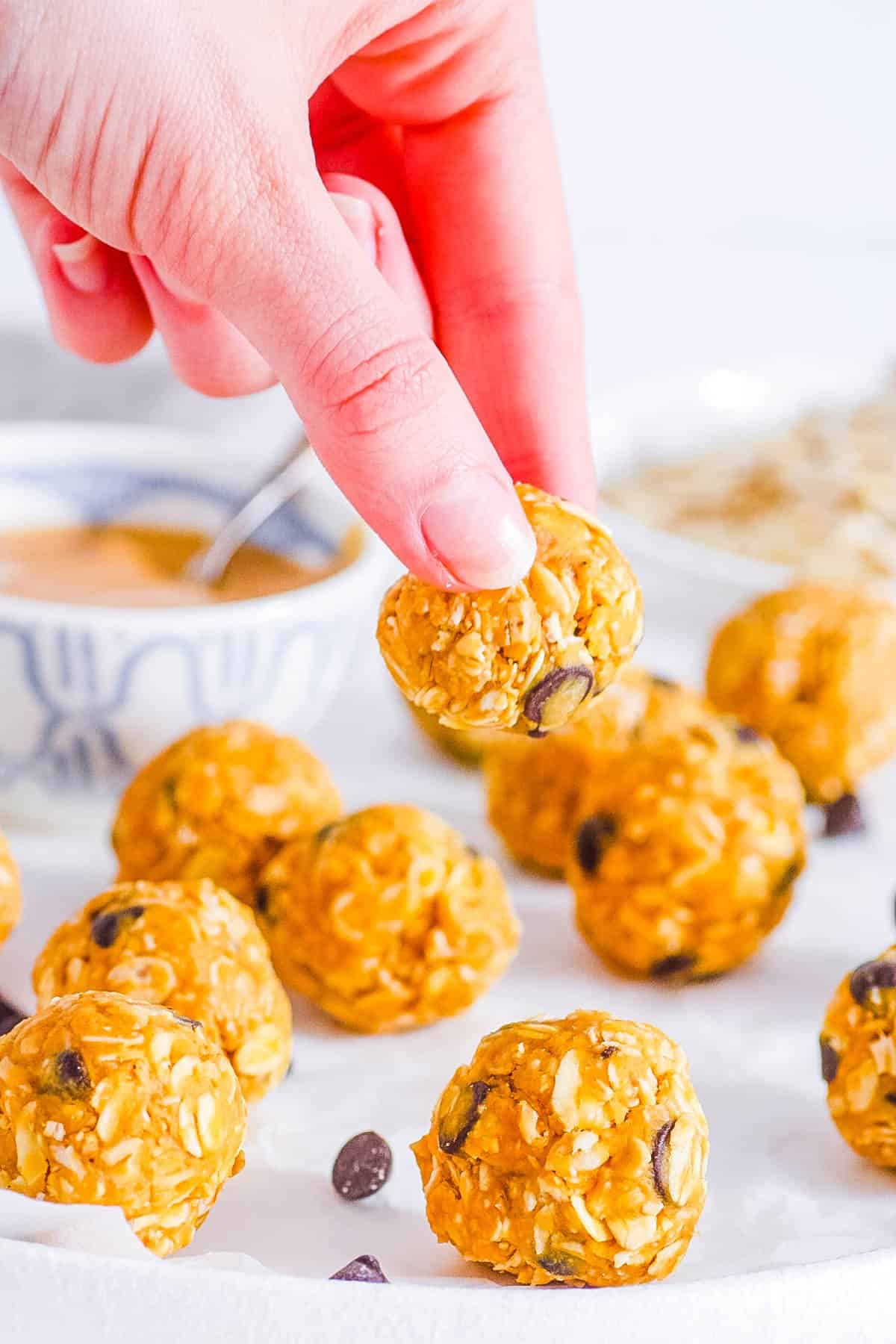
Want to Save This Recipe?
Enter your email & I’ll send it to your inbox. Plus, get great new recipes from me every week!
By submitting this form, you consent to receive emails from The Picky Eater.
Love this plant based dessert recipe? Please leave a 5-star rating 🌟 in the recipe below and/or a review in the comments section further down the page!
You can also FOLLOW ME on FACEBOOK, INSTAGRAM, and PINTEREST to see more delicious, healthy, family-friendly food, and if you have any questions, I’m here to help!
📋 Recipe Card
Healthy No-Bake Peanut Butter Bliss Balls
My healthy, easy no bake peanut butter bliss balls are loaded with creamy peanut butter and chocolate flavor, making them a hit with both kids and adults alike. Enjoy these as an on-the-go breakfast, wholesome snack, or healthy dessert alternative! They’re also dairy-free, vegan, gluten-free, and low in sugar, making them ideal for a variety of dietary preferences.
Servings: 16 balls
Calories: 93kcal
-
In a large bowl, using a wooden spoon, stir together the oats, peanut butter, chocolate chips, maple syrup, vanilla, salt (and protein powder, if using) until combined.
-
Line a baking sheet with parchment paper.
-
Taking small handfuls of the mixture, roll them into small balls 1-2 inches in size. Or you can use a cookie scoop. Place them onto the baking sheet.
-
Refrigerate the bites for 30 minutes or until solid. Store in an air-tight container in the fridge (they will last at least 1 week, and likely 2!)
- Use The Right Tools: Use a cookie scoop to get all of the balls the same size.
- Check The Oats: If you or someone in your family is gluten intolerant, be sure to use gluten-free oats.
- Involve The Kiddos: This is such a great no bake recipe for kids to make – get them in the kitchen!
- Adjust For Moisture: If the dough seems too wet to mold into balls, consider adding a tablespoon or two of almond flour.
- Sugar Free: If you want to make these truly sugar-free, you can omit the maple syrup, and they will still taste pretty good.
- Peanut-Free: Use your favorite alternative nut butter or seed-based butter.
- Nutritional information includes protein powder. Note: for even more protein, use 1 scoop of vegan vanilla protein powder and 1 scoop of peanut butter protein powder.
Serving: 1ball | Calories: 93kcal | Carbohydrates: 8g | Protein: 4g | Fat: 5g | Saturated Fat: 2g | Polyunsaturated Fat: 1g | Monounsaturated Fat: 2g | Cholesterol: 4mg | Sodium: 43mg | Potassium: 92mg | Fiber: 1g | Sugar: 3g
Health
Federal Experts Talk Bird Flu ‘What Ifs’ in WebMD Live Event

May 16, 2024 – Multiple U.S. agencies are working to contain the recent bird flu outbreak among cattle to prevent further spread to humans (beyond one case reported in early April) and use what we learned before, during, and after the COVID-19 pandemic to keep farm workers and the general public safe.
Fingers crossed, the bird flu will be contained and peter out. Or the outbreak could continue to spread among dairy cattle and other animals, threatening the health and livelihoods of farmers and others who work with livestock.
Or the virus could change in a way that makes it easier to infect and spread among people. If this happens, the worst-case scenario could be a new influenza pandemic.
With so many unknowns, WebMD brought together experts from four federal agencies to talk prevention, monitoring, and what the “what ifs” of bird flu might look like.
Communication with the public “about what we know, what we don’t know, and ways you and your family can stay safe is a priority for us at CDC,” said Nirav D. Shah, MD, JD, the CDC’s principal deputy director. “We at the federal level are responding, and we want the public to be following along.”
People should consult the websites for the CDC, FDA, U.S. Department of Agriculture (USDA), and the Administration for Strategic Preparedness and Response (ASPR) for updates.
It is essential to not only stay informed, but to seek trusted sources of information, Shah said during “Bird Flu 2024 – What You Need to Know,” an online briefing jointly sponsored by the CDC and WebMD.
An ‘Experimental Hamburger’
If one take-home message emerged from the event, it was that the threat to the general public remains low.
The retail milk supply is safe, although consuming raw or unpasteurized milk is not recommended. “While commercial milk supply is safe, we strongly advise against drinking raw milk,” said Donald A. Prater, DVM, acting director for the FDA’s Center for Food Safety and Applied Nutrition.
As for other foods, thoroughly cooked eggs are less risky than raw eggs, and the nation’s beef supply remains free of the virus as well.
For years, federal inspectors have purchased and tested meat at retail stores, said Eric Deeble, DVM, USDA deputy assistant secretary for the Office of Congressional Relations. So far, H5N1, the virus behind bird flu, has not been detected in beef.
The USDA took testing a step further and recently cooked ground beef from dairy cows in their lab. Using what Deeble described as an “experimental hamburger,” the agency showed cooking beef to 165 F or higher kills the virus if it ever becomes necessary.
The federal government now requires all cattle be tested and be free of bird flu virus before crossing any state lines. The government is also reimbursing farmers for veterinary care and loss of business related to the outbreak, and supply personal protective equipment (PPE) like gloves, masks, and face shields to workers.
Vaccination Not Recommended Now
Federal scientists know enough about H5N1 virus to create vaccines against it quickly if the need arises. It’s more about planning ahead at this point. “Vaccines are not part of our response right now,” said David Boucher, PhD, director of infectious diseases preparedness and response at the Administration for Strategic Preparedness and Response.
If the virus changes and becomes a bigger threat to people, “we have the building blocks to produce a vaccine,” Boucher added.
An event attendee asked if the seasonal flu shot offers any protection. “Unfortunately, the flu shot you got last year does not provide great protection from the avian flu,” Shah responded. “It might do a little bit … but that is the vaccine for seasonal flu. This is something more novel.”
Treatments Stockpiled and Ready
Antiviral medications, which if given early in the course of bird flu infection could shorten the severity or duration of illness, are available now, Shah said. The dairy farmer who was infected with bird flu earlier this year responded to oseltamivir (Tamiflu) treatment, for example.
When it comes to bird flu symptoms, the fact that the only infected person reported so far this year developed pink eye, also known as conjunctivitis, is interesting, Shah said. Officials would have expected to see more typical seasonal flu symptoms, he added.
“Influenza is not a new virus,” Boucher said. “With this strain of influenza, we are not seeing any genetic markers associated with resistance to antivirals. That means the antivirals we take for seasonal influenza would also be available if needed to treat H5N1.”
ASPR has stockpiled Tamiflu and three other antivirals. “We do have tens of millions of courses that can be distributed around the country if we need them,” he added.
“Influenza is an enemy we know well,” Boucher said. That is why “we have antivirals ready to go now and many types of PPE.”
Science in Action
The feds intend to stay on the case. They will continue to monitor emergency department visits, lab test orders, and wastewater samples for any changes suggesting a human pandemic risk is growing.
“While we’ve learned a great deal, there are still many things we do not know,” Deeble said.
Shah added, “As in any outbreak, this is an evolving situation and things can change. What you are seeing now is science in action.”
For the latest updates on bird flu in the United States, visit the CDC’s H5N1 Bird Flu: Current Situation Summary website.
-

 African History4 months ago
African History4 months agoBlack History Facts I had to Learn on My Own pt.6 📜
-

 African History4 years ago
African History4 years agoA Closer Look: Afro-Mexicans 🇲🇽
-

 African History1 year ago
African History1 year agoPROOF AFRICAN AMERICANS AIN'T FROM AFRICA DOCUMENTED EVIDENCE
-

 African History2 years ago
African History2 years agoHow Did Normal Medieval People Survive Winter? | Tudor Monastery Farm | Chronicle
-

 African History4 years ago
African History4 years agoA Closer Look: Afro-Mexicans 🇲🇽
-

 African History3 years ago
African History3 years agoWhat happened to the many African Kingdoms? History of Africa 1500-1800 Documentary 1/6
-

 African History3 years ago
African History3 years agoThe Entire History of Africa in Under 10 Minutes – Documentary
-

 African History2 years ago
African History2 years agoAFRO MEXICO: Black History In Mexico!

